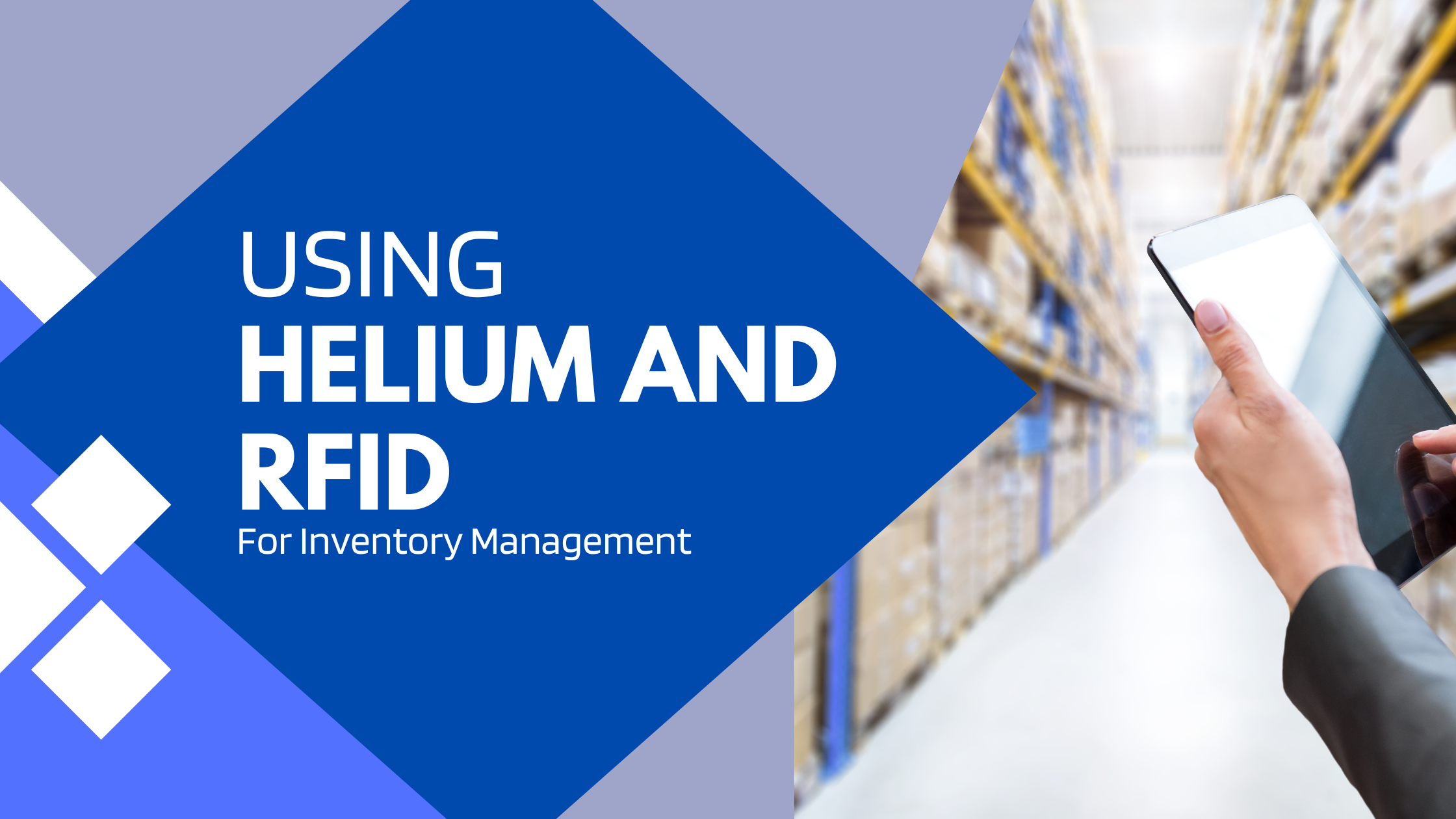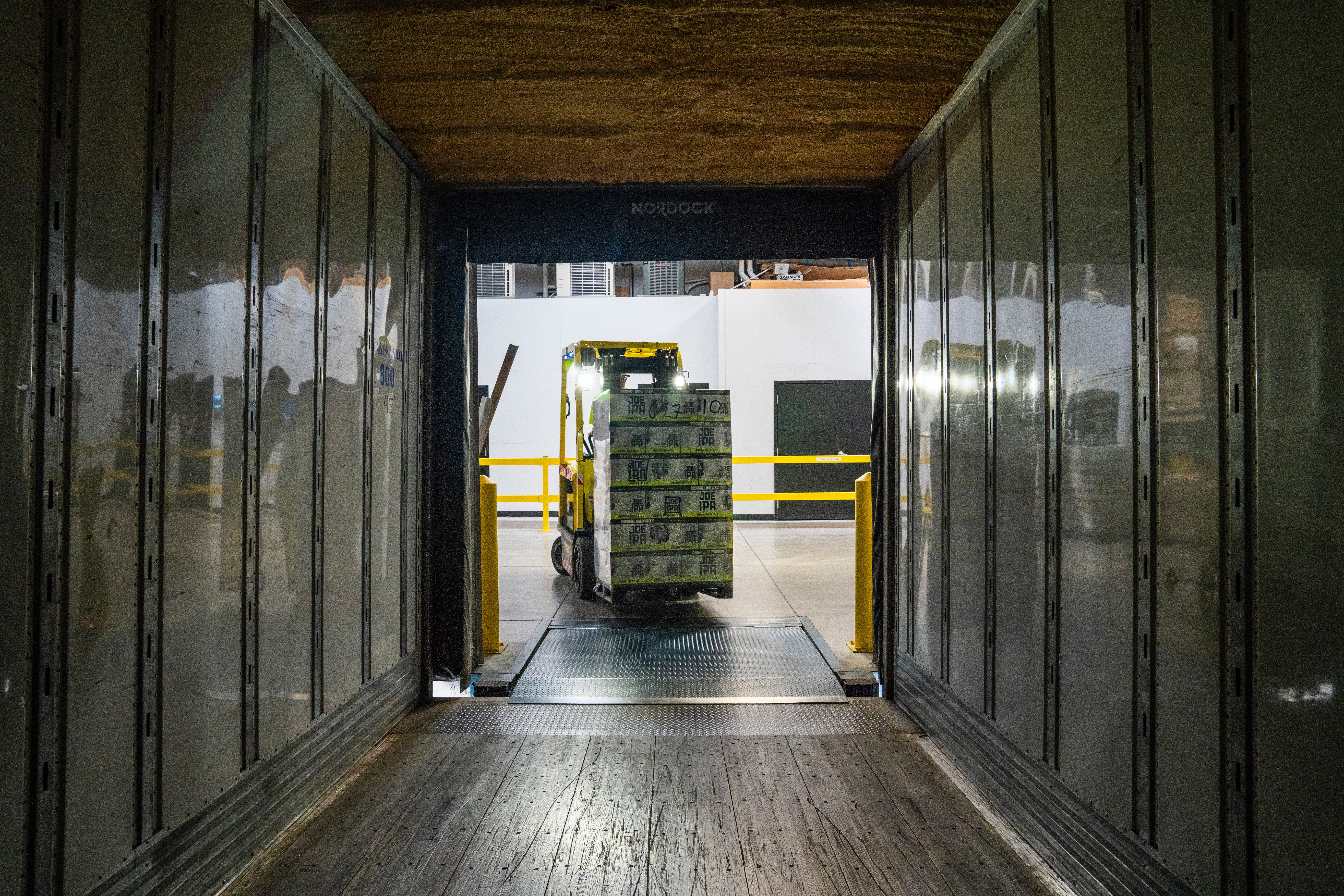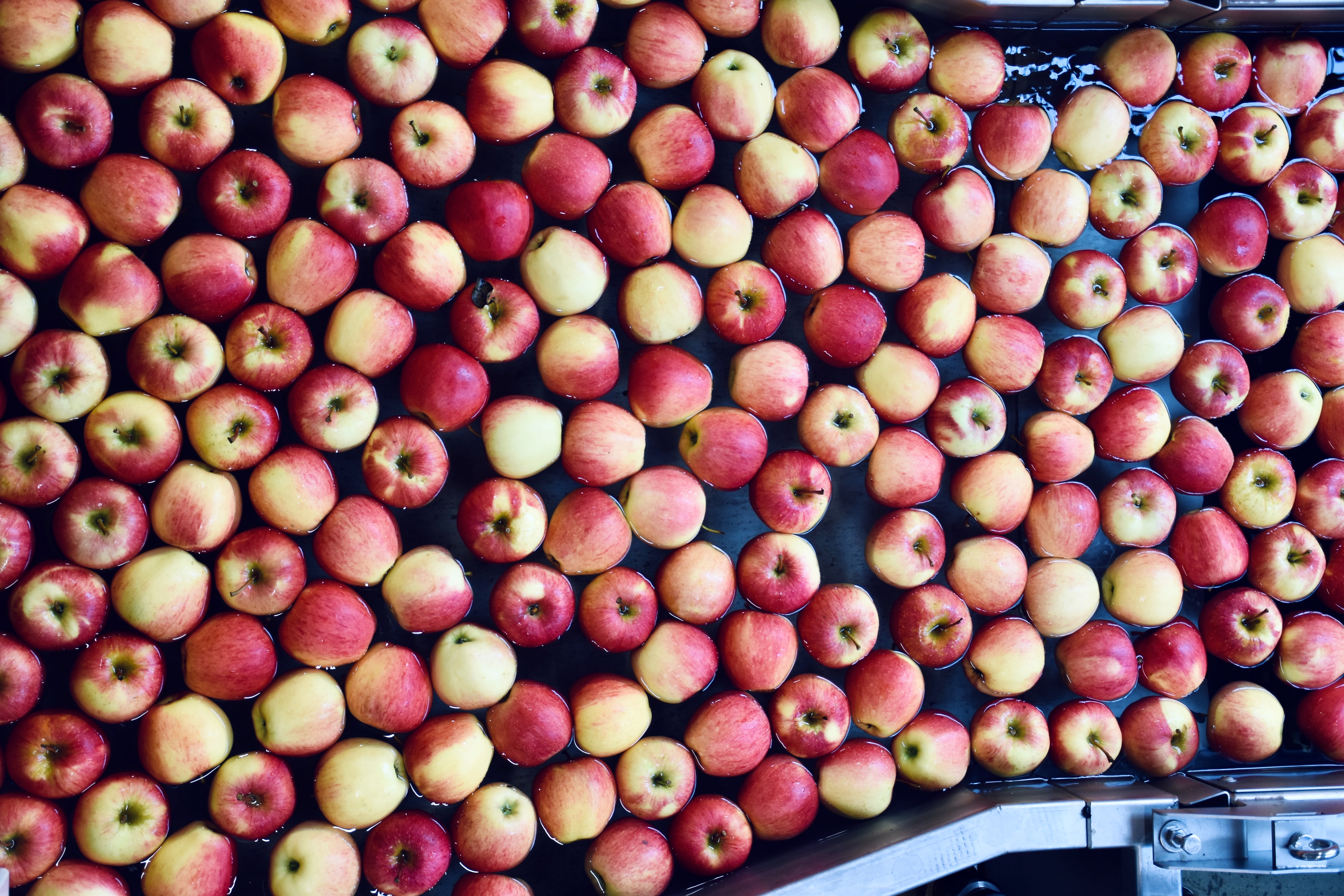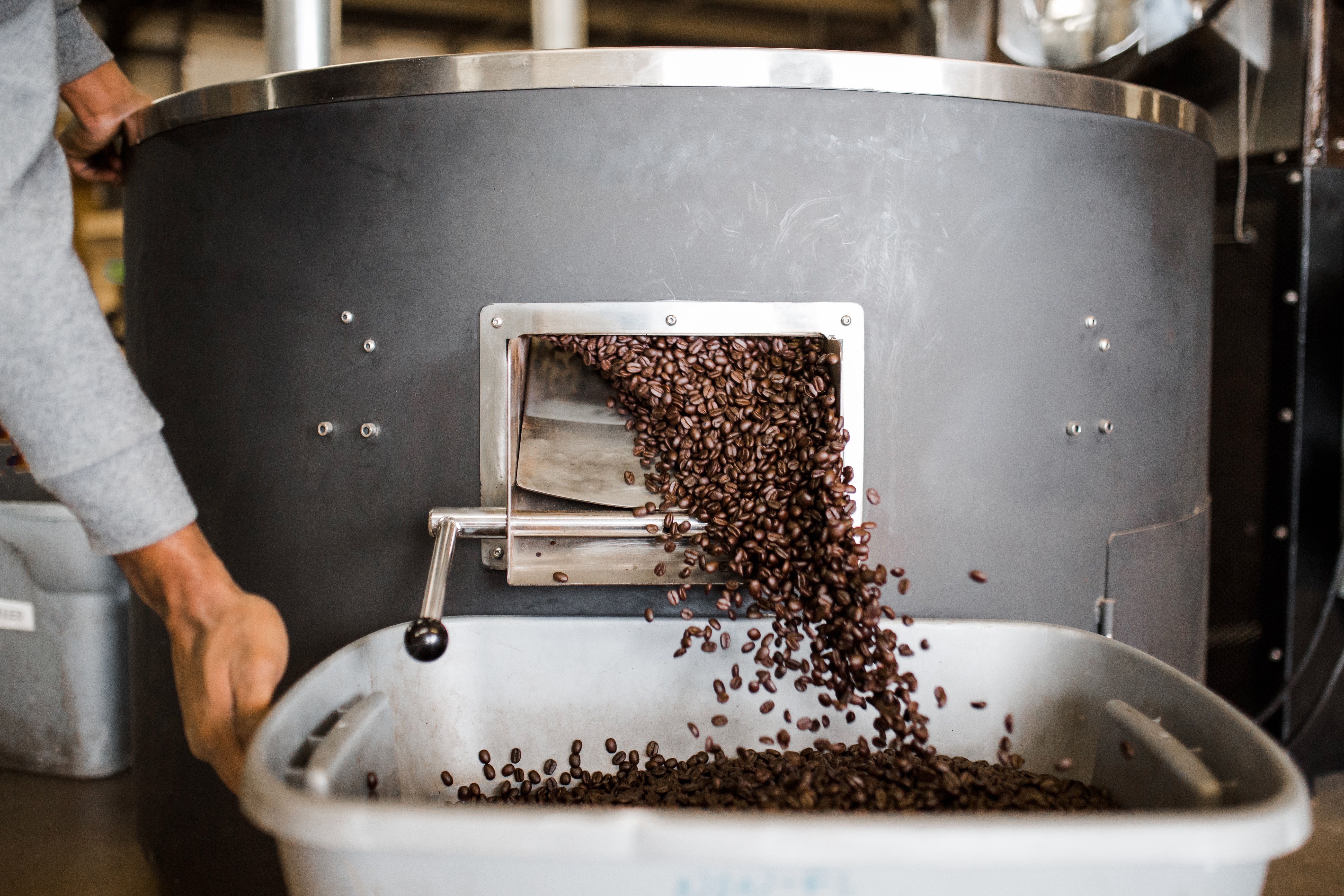Using Helium and RFID for Inventory

Most retail operations in the US have a supply chain accuracy of 63%, leaving plenty of room for error and issues when it comes to restocking and supply chain transparency.
Consumers continue to be interested in where their products came from while also becoming more and more price-conscious as a result of the economic landscape. As we look towards 2023, retailers have to be seen to make supply chains as transparent and efficient as possible to meet consumer demand.
Hannah Anderson, managing director of UK-based sustainable grocery business 44 Foods, perfectly explained the challenge that retailers face when she said:
"When it comes to buying, we put so much of our focus into working directly with farmers and producers up and down the UK to source food that isn’t just ethically produced, but priced at a level that accurately reflects the real costs of production [...] We’re also on a mission to reduce consumer waste by ordering food only when purchased, which means we don’t have stock sat in depots, and our customers get a longer shelf life too."
Achieving what Anderson laid out above isn’t easy — it may require some novel approaches to supply chain and inventory management.
Let’s look at two such innovations: Helium and RFID.


Helium blockchain for food inventory
Understanding the Helium Blockchain
Helium is an open-source, decentralized blockchain network primarily developed to provide wireless connectivity to Internet of Things (IoT) devices and other small, low-power devices.
IoT is a system that allows everyday gadgets to connect with the internet and each other. This way, they can transfer data between themselves, and the owner can control all the devices remotely.
The Helium network (a.k.a. “The People’s Network”) makes internet connectivity possible for everybody by using Helium hotspots purchased by individuals worldwide. These hotspot owners provide coverage to all IoT devices around them and receive rewards in Helium’s native token, HNT.
So how are Helium hotspots better than or any different from regular Wi-Fi routers?
Helium hotspots use the Long Range Wide Area Network (LoRaWAN) networking protocol to transfer small data packets over long distances. The LoRaWAN protocol allows the hotspots to provide connectivity to areas 200 times farther than regular Wi-Fi routers would allow.
So while Wi-Fi allows the transfer of large packets of data over a short range, LoRaWAN allows the transfer of small packets over a much larger distance. There are over 900,000 Helium hotspots globally — and that number is growing exponentially.
Using Helium for inventory management
Retail products pass through many stages in the food supply chain. And it can be incredibly difficult to monitor every stage of the process, from production to handling, processing, packaging, distribution, and consumption. Conventional techniques help manage this process, but they have some limitations.
For example, mistakes within conventional inventory systems are unlikely to be seen in real-time. And even when a mistake has been identified, it’s not always easy to pinpoint the problem’s origin.
Investigations within conventional inventory systems are time-consuming, requiring someone to go through the sequence of all activities recorded in ledgers and documents, sometimes from the beginning of the supply chain until the end.
Within logistics, Helium tech makes it easier to monitor and take stock (pun intended!) of essential data points at every step of the journey.
You can use sensors connected to the Helium network to tell you where a particular item was produced, processed, and packaged, the temperatures at different points, time spent in transit, and so on.
And that’s not all. Thanks to the unique nature of the blockchain, all this data is made public to everyone involved in the process: producers, consumers, and distributors. This way, there is full transparency for everyone.

RFID for food inventory
What is RFID?
RFID is short for Radio Frequency Identification, a technology that uses electromagnetic coupling to track items, animals, or people.
It is similar to barcode technology, with a few critical differences.
First, it doesn’t need a line of sight to identify and track objects, so you don’t have to put an object with an RFID tag directly in front of a reader to track it.
It can also read hundreds of tags at once and store much more data than a barcode system. RFID systems can log information about temperature, weight, expiration dates, and more.
RFID systems are more common than we think. For example, if you have used an access card to enter a building or opened your garage door with a key fob, then you have used RFID.
Using RFID for inventory management
There are many ways RFID can be used to improve an inventory process, including:
RFID improves supply chain monitoring
Using RFID, you can monitor all the essential data in your CPG supply chain throughout the distribution and storage phases. This is possible due to the wide range of RFID systems and RFID readers' ability to communicate with multiple tags simultaneously.
RFID monitors food temperature and expiration dates
Certain foods and beverages require specific temperatures for their storage and preservation. With an RFID system, you can monitor the temperature data on every item within a warehouse or storage facility. This way, you can identify products that aren’t within their temperature requirements and adjust the conditions as needed.
You can also monitor food products in your inventory to know when their expiry dates are near. Next, you can either discount them for sale on the shop floor and avoid stock waste or remove them from the inventory before they cause harm.
RFID tracks the number of products in your inventory
RFID systems highlight how much of an item you have in your inventory and whether you should restock that product. You can also use data from your RFID system to gain insight into how you should stock your inventory in the future so that you don’t understock or overstock.
Food waste is a huge problem in the food and beverage industry — a recent study found that 1.3 billion tons of food go to waste each year (that’s equivalent to one-third of all food produced for human consumption). By using RFID to track your stock, you can massively reduce the amount of food waste from your company.
You can also try direct store delivery as your distribution model.

RFID provides visibility to consumers
Certain consumers demand a high level of transparency regarding the foods they buy — that’s especially true for organic, ethical, fair trade, or healthy/‘good for you’ product ranges. Without RFID, these shoppers have to head online to do their research, picking apart whether a brand or retailer is as good as they sound.
With RFID, however, consumers have access to information about a food product and its supply chain history.
So what does this mean for retailers?
Technologies like the Helium Network and RFID have taken a lot of the heavy lifting that retail professionals used to have to do and made it much, much more manageable. Now, using Helium or RFID for inventory, buyers in the food and beverage industry can easily stock their stores with the best food quality while monitoring the entire process in real time.
Better still, these technologies have increased transparency between producers, distributors, retail chains, and consumers. Because of this transparency, retailers can build customer loyalty and drive even more ROI from installing new systems.
How Buffalo Market uses Helium for food distribution
As a food distributor, Buffalo Market is keenly aware of the historical lack of transparency in the industry and how it leads to frustration and disappointment. That’s why one of the primary tenets of Buffalo Market’s business philosophy is to be as transparent as possible, both internally with our team members and externally with our retail and CPG partners.
To that end, our fleet of delivery trucks is outfitted with Helium-enabled sensors. These sensors allow us to collect and openly share data with our customers. If a store receives a delivery of frozen chicken, they can trust that our delivery driver kept the product at temperature the entire time it was in transit. How? Because they’re able to freely access the data collected from onboard temperature and humidity sensors on the blockchain.
Using Helium sensors and blockchain technology, Buffalo Market helps foster trust between ourselves and our clients and provides better service based on reliability and accountability.
Want to learn more about how Buffalo Market uses tech to be the fastest, most transparent food distributor on the market? Reach out to one of our experts today!




